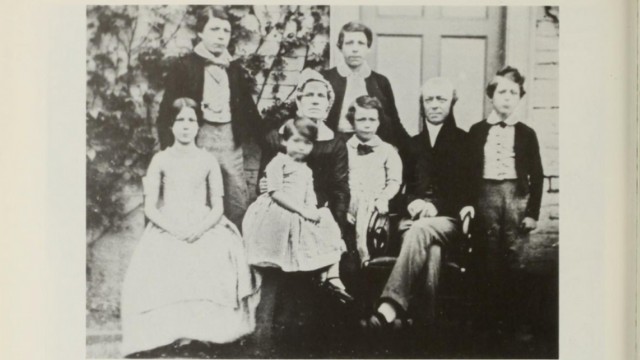
John Cadbury (1801 – 1889) was born into a prominent Quaker family in Birmingham, England. A businessman who capitalized on the fashion for chocolate drinks, John parlayed a specialized coffee and tea shop on Bull Street into the Cadbury chocolate business.
The Cadbury family joined the Quaker Faith in 1725. John’s father Richard Tapper Cadbury was Chairman of Birmingham City for 15 years and his career as a successful merchant is explored in John Crosfield’s book, A History of the Cadbury Family, Vol 1. The Cadbury family’s legacy was felt beyond the chocolate business.
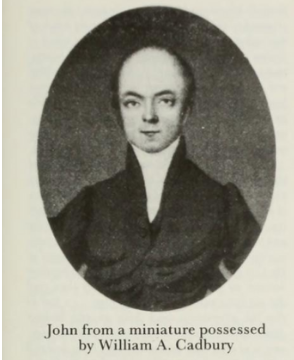 John Bradley’s Cadbury’s Purple Reign: The Story Behind Chocolate’s Best-Loved Brand journeys through Cadbury’s story. At the age of 24 in 1824, John set up a shop on Bull Street, Birmingham, next to his father’s drapery business. He sold tea and coffee until branching out into selling cocoa and making drinking chocolate. His customer base in Birmingham was affluent and could afford to buy the novel cocoa and chocolate products despite the heavy taxation levied on their import. He soon rented a large factory and grew his focus to manufacturing cocoa products for consumers everywhere.
John Bradley’s Cadbury’s Purple Reign: The Story Behind Chocolate’s Best-Loved Brand journeys through Cadbury’s story. At the age of 24 in 1824, John set up a shop on Bull Street, Birmingham, next to his father’s drapery business. He sold tea and coffee until branching out into selling cocoa and making drinking chocolate. His customer base in Birmingham was affluent and could afford to buy the novel cocoa and chocolate products despite the heavy taxation levied on their import. He soon rented a large factory and grew his focus to manufacturing cocoa products for consumers everywhere.
John went on to form the Cadbury Bros enterprise with his brother, Benjamin. Together they expanded their cocoa business, and when the Government slashed import duties on cocoa in 1832 they were ready with a range of lower priced products that were attractive and attainable luxuries for the wage-earning classes.
As a non-drinking Quaker, John Cadbury marketed chocolate as a healthy alternative to alcohol. He was a forward thinker on the topics of child labor and animal cruelty. He led a campaign to prohibit the employment of boys as chimney sweeps and formed the Animals Friend Society, a predecessor of the Royal Society for the Prevention of Cruelty to Animals.
Excerpt from A History of the Cadbury Family, Vol 1:
By 1846 John was under a great deal of pressure. In addition to running the factory and the shop he was actively engaged in local government and social reform. His elder brother Benjamin gave up his drapery shop in that year, and John took him into partnership. The name of the firm was changed from John Cadbury to Cadbury Brothers. Benjamin was mainly responsible for the “commercial and office side of the business.”
In 1849, John handed over the shop at Bull Street to his nephew Richard Barrow. That same year Cadbury Bros. introduced an advertising campaign that directed all profits from the sale of a branded cocoa product to the creation of a model community, the Parish Experiment:
THE MODEL PARISH COCOA, strongly recommended by many eminent members of the medical profession as light and easy of digestion, more nutritious and wholesome than tea or coffee.
Price 1s. and 1s.6d. per lb. The manufacturers profits are given to the Model Parish Experiment.
Manufactured by CADBURY BROTHERS, Bridge Street, Birmingham. Sold wholesale and retail by WERTHEIM and MACINTOSH, 24 Paternoster Row, London.
Agents wanted for all parts of the Kingdom. Apply to CADBURY BROTHERS.
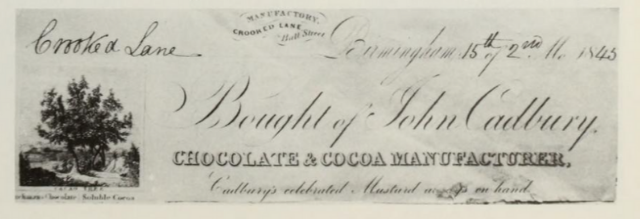
John Crosfield muses in his book, “The Model Parish was to be a planned village with cottages, villas, a factory, farms, and smallholdings, in which there would be no public houses. One wonders whether it was this scheme of John’s which fired the imagination of his sons, and led to the building of Bournville thirty-three years later.”
The early fifties saw well-designed price lists by Cadbury Bros and also publicity from the Bridge Street Factory. There were show cards and Press advertisements from Homoeopathic Coffee and Cocoa embodying certain medical claims. One leaflet announced Cadburys “new and improved method of roasting whereby the full aroma and richness developed is secured.”
The Cadbury Bros and their family continued to flourish and eventually became a globally recognized brand.
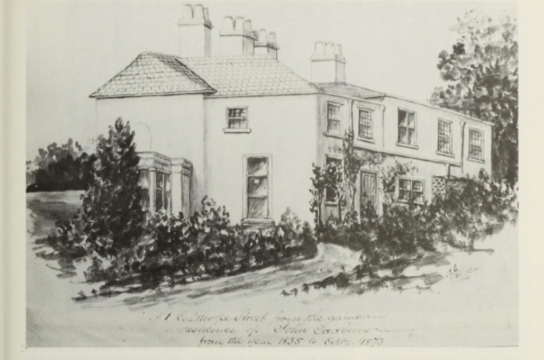
Apart from building the business, he spent his life dedicated to social and civic work. In 1829, he joined his father on the Board of Street Commissioners. The board had been set up by the Improvement Bill of 1769 to make the streets of Birmingham safer, cleaner, and more convenient. They had also introduced street lighting.
John’s first appointment as a junior Commissioner was to the Cleansing Committee, responsible for street cleaners. From 1836 until the board was abolished in 1851, John’s father was the Chairman, equivalent to Mayor of Birmingham. John acted as Deputy Chairman. He was also a Chairman of the Market and Fairs Committee, Steam Engine Committee. In 1830, John was appointed an Overseer of the Poor. He made reformative changes in the hiring of children as chimney sweeps.
John was an active member of Birmingham Meeting and for many years an elder. He was appointed clerk of the Warwickshire North Monthly Meeting at 29, and the following year he became an Overseer. He was the first president of the Friends’ Reading Society and a generous supporter of Seven Street Friday-day Schools. In 1843, he accompanied Samuel Capper, in his mission to the south of Ireland.
An excerpt from the A History of the Cadbury Family, Vol 1:
The Friends Annual Monitor wrote of John Cadbury:
His naturally strong will, guided by the wisdom that is from above, enabled him to pursure his work with undeviating cheerfulness even under bodily suffering and when troubles gathered thick about him. The Holy Scriptures were clear to him, his favorite portions being the Gospel and Epistles of John, the practical Epistle of James, and the first, twenty-third and hundred and third Psalms.
His garden was a great delight to him, but the sweet pleasure he derived from it was to take baskets of fruit and flowers into the town for those who could not grow them.
He was very diffident in speaking of his religious experiences. When, as sometimes the case, he offered a prayer or thanksgiving at the close of the morning or evening reading, the reverence of his spirit was intense; and he would not desist from kneeling even when the effort cost him bodily suffering.
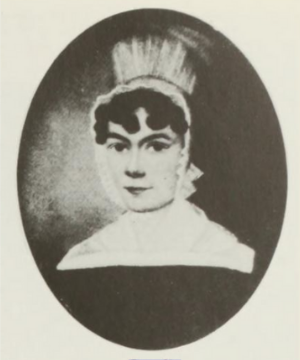
John had married Priscilla Dymond in 1826, but she died two years later. In 1832, he married Candia Barrow. They had six sons and one daughter. In 1861, he retired thirty years after starting the factory. He turned over complete control of the business to his two young sons, Richard and George. He was 60 years old but was suffering from severe arthritis and coping with the loss of his wife, Candia who passed away in 1855. John died on the 11th of May 1889 and is buried at Witton Cemetery in Birmingham.
Image credits: John Crosfield’s book, A History of the Cadbury Family, Vol 1